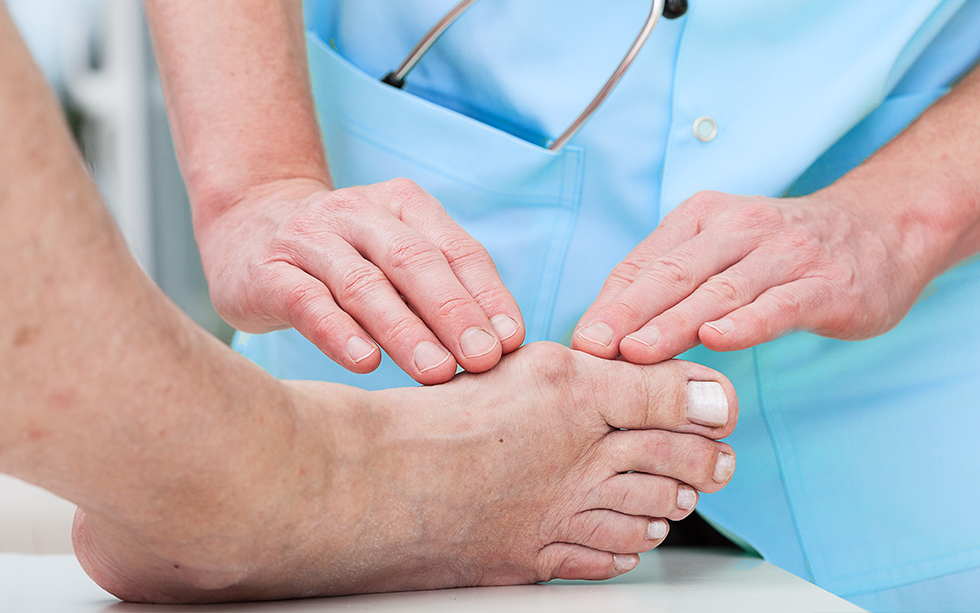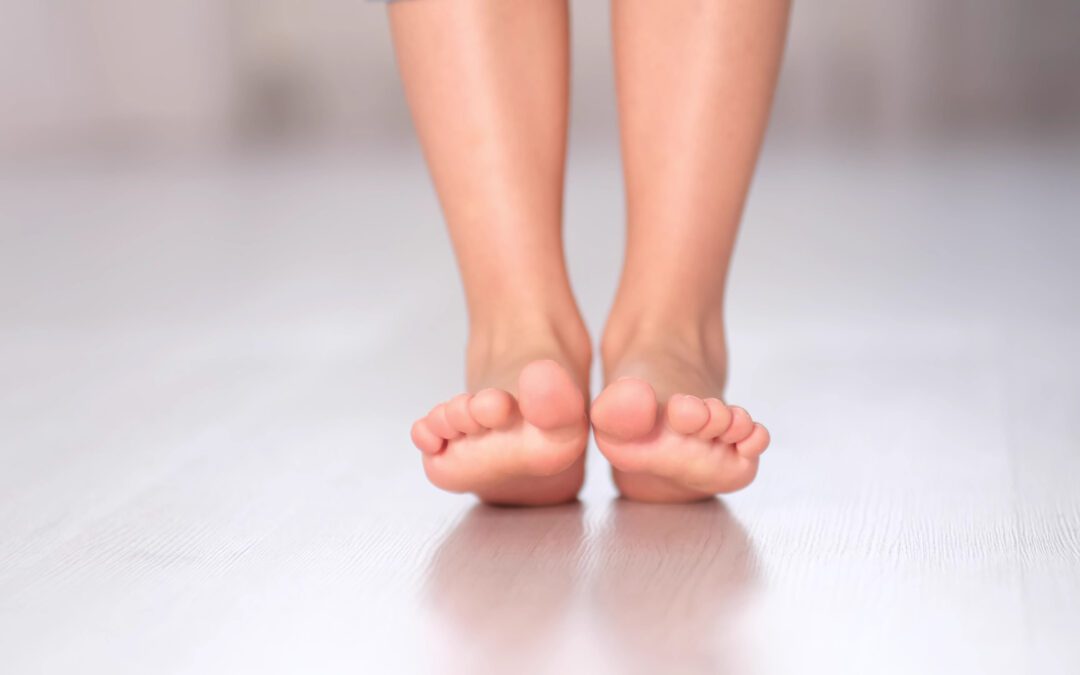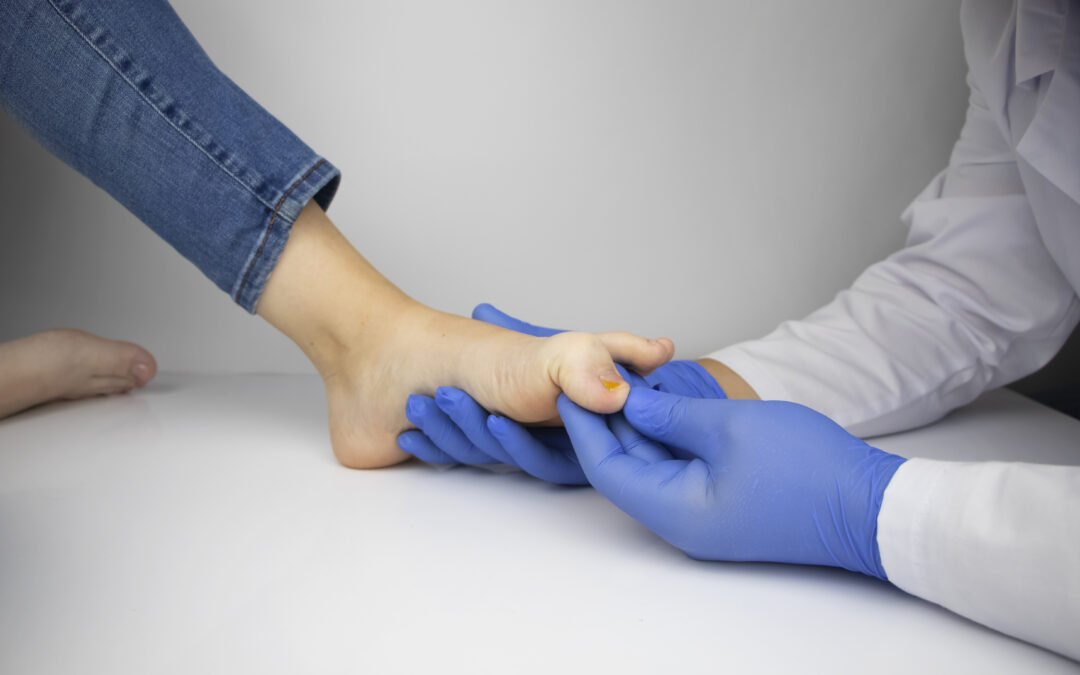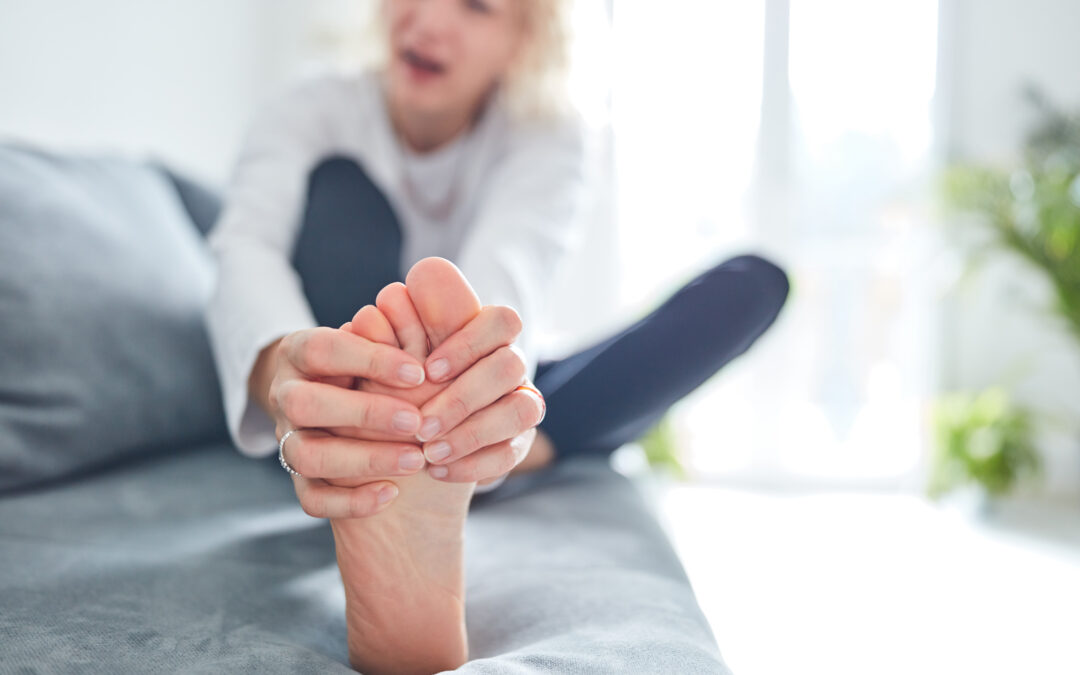A podiatric problem we frequently see at Podiatry Associates is the common “bunion”. Bunions are often not noticed during the early stages of development. The deformity may slowly worsen over time without treatment. Because of this tricky onset, bunions may appear “to come out of nowhere”. Many times patients wait to come in until the deformity is much more severe with the onset of pain causing limited walking and limited wearing of shoes.
Bunions need expert help. However, there are ways to stop the pain associated with bunions while you wait to see someone about them.
What Is A Bunion?
Wondering if you have a bunion? Look to the base of your big toe.
Bunions form when your big toe slips out of its normal position at the metatarsophalangeal (MTP) joint, resulting in a bone prominence at the base of the great toe and the big toe leaning toward the adjacent second toe.
The big toe is responsible for supporting a lot of your body weight, which is why we need it to walk correctly. Because of this, walking with a bunion can be very painful — the bunion essentially places a majority of your body weight on a joint that is misaligned.
As well as pressure and pain from the unnaturally-aligned joint (arthralgia), most shoes do not reasonably accommodate the bone prominence of a bunion and it is easy to develop painful skin irritation/inflammation, calluses, blisters, or bursitis because of them.
Symptoms of bunions include:
- A firm bone prominence, “boney bump” on the outside of the big toe
- Swelling, pain, and redness at the base of the big toe
- A painful or stiff big toe joint
- Calluses, corns, and blisters on other parts of the foot due to the big toe’s misalignment
- Pain wearing shoes or walking
Why Do People Get Bunions?
Several factors contribute to bunions, but typically they are genetic. Bunions themselves are not passed down or contagious. Instead, they are due to inherited foot shape and incorrect walking mechanics that may lead to bunion development. In other words, if one or both of your parents suffer from bunions because of the way their feet are shaped, you might, too. Abnormal pronation and flat feet are often a culprit in bunion growth.
Some people may not have family history bunions but get them anyway. Shoe type may influence the development of a bunion, as pointed toe shoes, shoes which are too tight or unsupportive shoes can encourage the MTP to slip out of place. Additionally, excessive work or pressure on the feet can cause trauma to the MTP, which in turn may cause bunion development. Dancers — especially pointe ballerinas — are prone to bunions.
How Do You Fix Bunions (Before They Get Worse)?
With bunions, time is of the essence. A mild or moderate bunion deformity is easier to treat or surgically correct, compared to a severe bunion. At the first sign of a bunion deformity, it is important to see a podiatrist. You can treat the symptoms of a bunion at home, but a bunion will not go away without professional help.
Until your doctor can recommend a treatment plan for your bunion, some of the things you can do to alleviate the pain of a bunion include:
- Wearing proper, supportive shoes with a wide toe box
- Avoiding high heels or constrictive dress shoes
- Apply ice, elevating the foot, and taking anti-inflammatory drugs to ease the pain
- Wearing a spacer between your big toe and the second toe
- Apply a bunion padding around the bump itself
Your best chance for bunion recovery will be to see a podiatrist as soon as you recognize the signs and symptoms of a bunion. To schedule an appointment with one of our podiatrists, click here.





